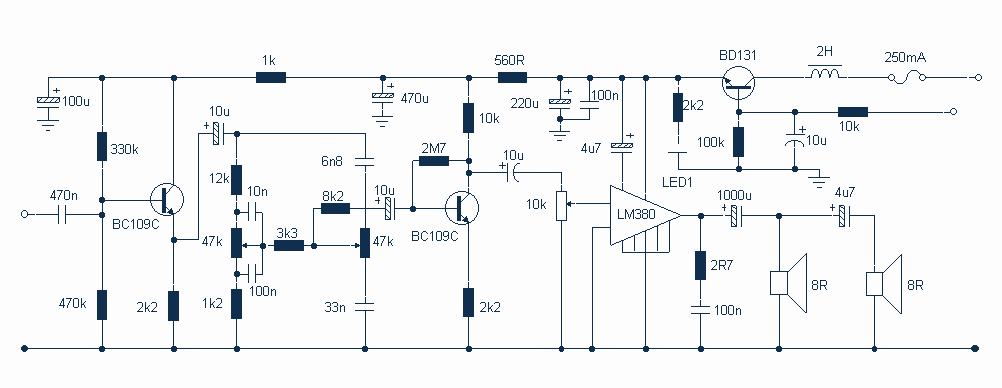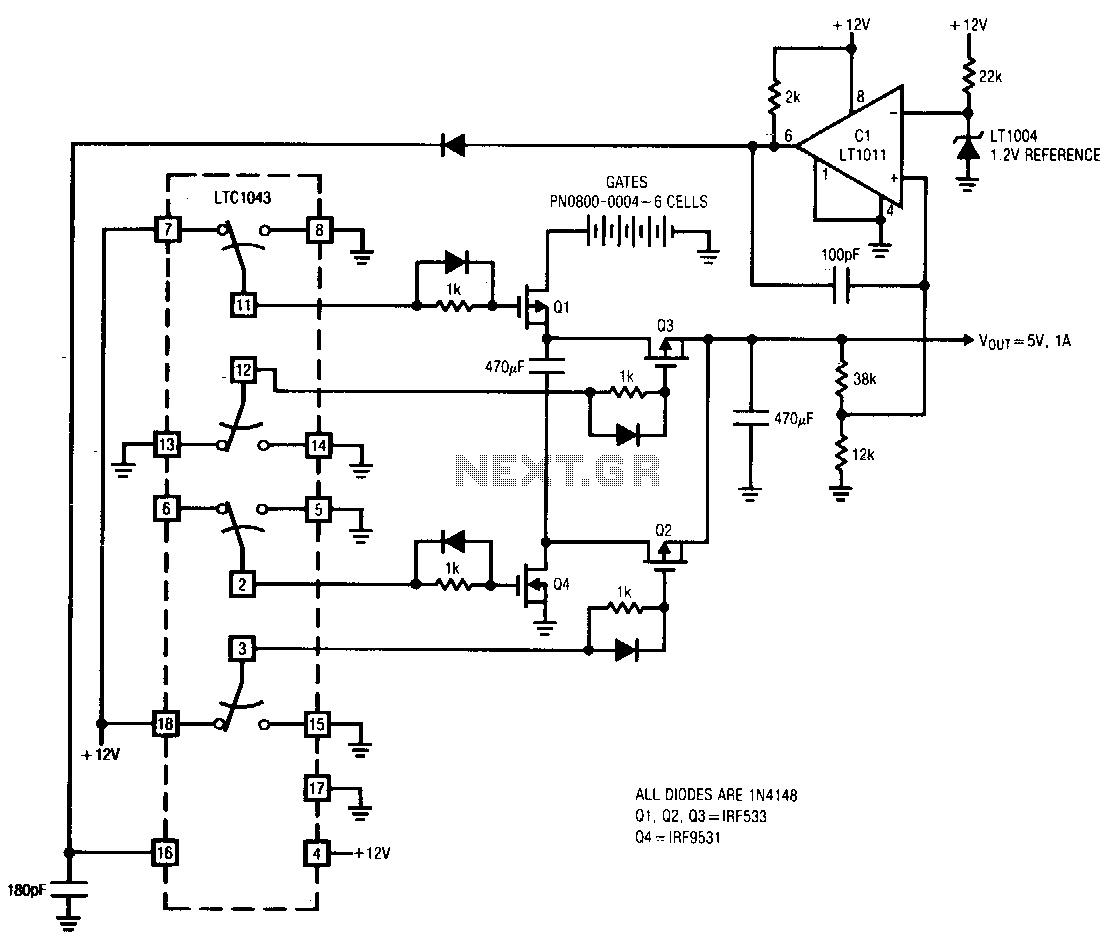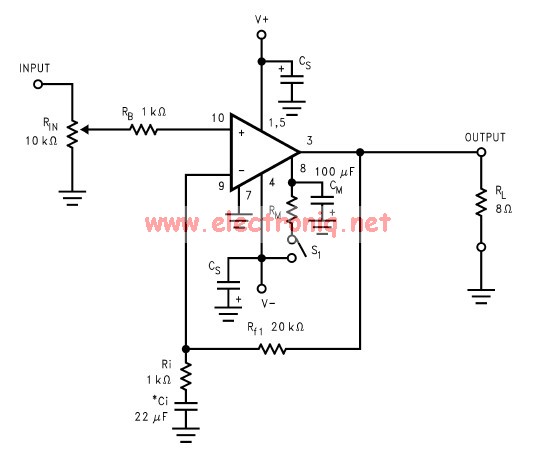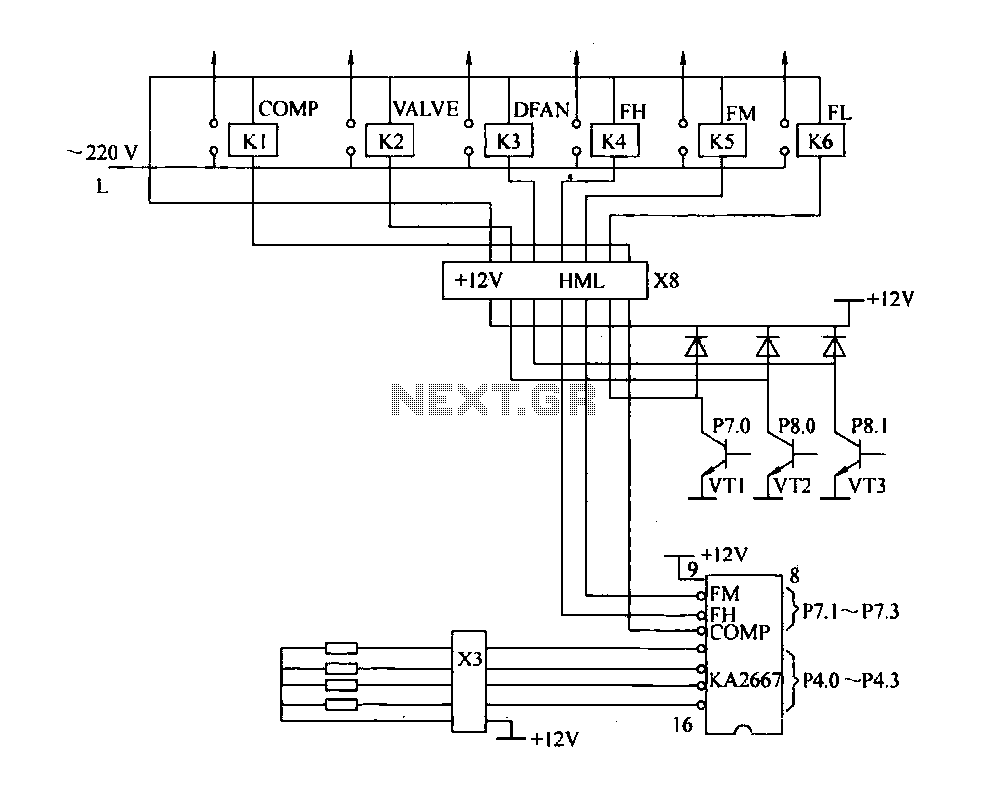
Energy-Saving Switch Schematic
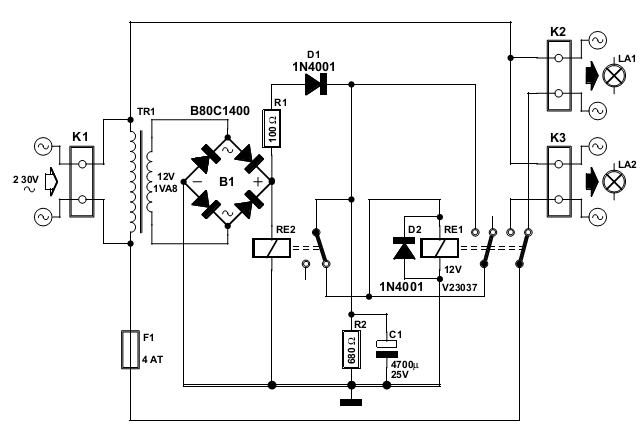
The normal operation of the light switch provides gentle illumination (LA1). To increase the brightness, simply turn the switch off and then back on again within one second. The circuit will revert to the gentle light setting if switched off for more than three seconds. There is no need to replace the light switch with a dual version; this circuit can be inserted between the switch and the lamp. Almost immediately after the switch is turned on, a fast-acting miniature relay (RE2) activates, as it is connected directly after the bridge rectifier. Its normally closed contact isolates another relay (RE1) from the supply, allowing current to flow to LA1 through RE1's normally closed contact. RE1 does not activate quickly due to being a power relay, which is relatively slow, and its response is further delayed by the time constant of resistor R1 and capacitor C1. If the current through the light switch is briefly interrupted, RE2 will drop out immediately. Sufficient energy is stored in C1 to activate RE1, which then maintains its state through a second normally open contact. If current flows again through the light switch within one second, LA2 will illuminate. To turn LA1 back on, the light switch must be turned off for more than three seconds to allow C1 to discharge through R2 and RE1. The printed circuit board can be housed in a well-insulated plastic enclosure or integrated into a light fitting if there is adequate space. The printed circuit board connects directly to the mains-powered lighting circuit. It is crucial to take every precaution to avoid contact with any components or tracks that carry hazardous voltages. The circuit must be enclosed in a well-insulated ABS plastic casing.
The circuit operates on a simple yet effective principle, utilizing two relays to manage the illumination levels of the connected lamps. The initial gentle illumination is handled by LA1, which is powered through RE1's normally closed contact. When the switch is toggled off and back on within one second, RE2 engages, allowing for a temporary increase in brightness through LA2. This mechanism leverages the rapid response of RE2 to create a momentary surge in current that energizes LA2, providing a brighter light.
The design incorporates a time delay feature that is essential for preventing accidental toggling back to LA1. The delay is achieved through the RC time constant formed by R1 and C1, which controls the charging and discharging behavior of the capacitor. This ensures that RE1 remains inactive during brief interruptions, allowing the circuit to stabilize before returning to its original state.
Safety is paramount in this circuit design. The use of a well-insulated ABS plastic enclosure safeguards against accidental contact with high-voltage components, thereby minimizing the risk of electric shock. The printed circuit board layout should be designed with careful consideration of component placement to reduce the risk of arcing or short circuits, particularly in areas where high voltage is present.
When implementing this circuit, it is advisable to follow local electrical codes and regulations to ensure compliance and safety standards. Proper labeling of the enclosure and clear instructions for users can further enhance safety and usability.Normal operation of the light switch gives gentle illumination (LA1). For more light, simply turn the switch off and then immediately (within 1 s) on again. The circuit returns to the gentle light set-ting when switched off for more than 3 s. There is no need to replace the light switch with a dual version: simply insert this circuit between switch and lamp. Almost immediately after switch-on, fast-acting miniature relay RE2 pulls in, since it is connected directly after the bridge rectifier. Its nor-mallyclosed contact then isolates RE1 from the supply, and thus current flows to LA1 via RE1`s normally-closed con-tact.
RE1 does not have time to pull in as it is a power relay and thus relatively slow. Its response is also slowed down by the time constant of R1 and C1. If the current through the light switch is briefly interrupted, RE2 drops out immediately. There is enough energy stored in C1 to activate RE1, which then holds itself pulled in via a second, normally-open, contact. If current starts to flow again through the light switch within 1s, LA2 will light. To switch LA1 back on it is necessary to turn the light switch off for more than 3 s, so that C1 can discharge via R2 and RE1.
The printed circuit board can be built into a well insulating plastic enclosure or be incorporated into a light fitting if there is sufficient space. the printed circuit board is connected directly to the mains-powered lighting circuit. Every precaution must be taken to prevent touching any component or tracks, which carry dangerous voltages.
The circuit must be built into a well insulated ABS plastic enclosure. 🔗 External reference
The circuit operates on a simple yet effective principle, utilizing two relays to manage the illumination levels of the connected lamps. The initial gentle illumination is handled by LA1, which is powered through RE1's normally closed contact. When the switch is toggled off and back on within one second, RE2 engages, allowing for a temporary increase in brightness through LA2. This mechanism leverages the rapid response of RE2 to create a momentary surge in current that energizes LA2, providing a brighter light.
The design incorporates a time delay feature that is essential for preventing accidental toggling back to LA1. The delay is achieved through the RC time constant formed by R1 and C1, which controls the charging and discharging behavior of the capacitor. This ensures that RE1 remains inactive during brief interruptions, allowing the circuit to stabilize before returning to its original state.
Safety is paramount in this circuit design. The use of a well-insulated ABS plastic enclosure safeguards against accidental contact with high-voltage components, thereby minimizing the risk of electric shock. The printed circuit board layout should be designed with careful consideration of component placement to reduce the risk of arcing or short circuits, particularly in areas where high voltage is present.
When implementing this circuit, it is advisable to follow local electrical codes and regulations to ensure compliance and safety standards. Proper labeling of the enclosure and clear instructions for users can further enhance safety and usability.Normal operation of the light switch gives gentle illumination (LA1). For more light, simply turn the switch off and then immediately (within 1 s) on again. The circuit returns to the gentle light set-ting when switched off for more than 3 s. There is no need to replace the light switch with a dual version: simply insert this circuit between switch and lamp. Almost immediately after switch-on, fast-acting miniature relay RE2 pulls in, since it is connected directly after the bridge rectifier. Its nor-mallyclosed contact then isolates RE1 from the supply, and thus current flows to LA1 via RE1`s normally-closed con-tact.
RE1 does not have time to pull in as it is a power relay and thus relatively slow. Its response is also slowed down by the time constant of R1 and C1. If the current through the light switch is briefly interrupted, RE2 drops out immediately. There is enough energy stored in C1 to activate RE1, which then holds itself pulled in via a second, normally-open, contact. If current starts to flow again through the light switch within 1s, LA2 will light. To switch LA1 back on it is necessary to turn the light switch off for more than 3 s, so that C1 can discharge via R2 and RE1.
The printed circuit board can be built into a well insulating plastic enclosure or be incorporated into a light fitting if there is sufficient space. the printed circuit board is connected directly to the mains-powered lighting circuit. Every precaution must be taken to prevent touching any component or tracks, which carry dangerous voltages.
The circuit must be built into a well insulated ABS plastic enclosure. 🔗 External reference
